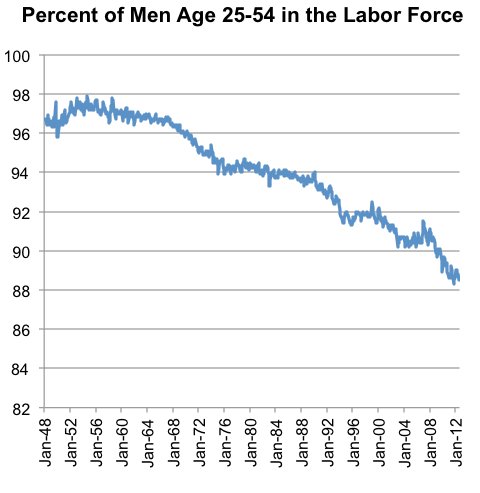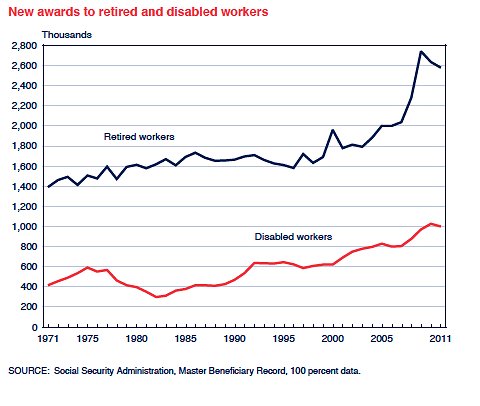
CATHERINE RAMPELL
Dollars to doughnuts.
Friday’s jobs report for August was chock full of all sorts of bad news. Among the most distressing: The share of men actively participating in the labor force — that is, working or looking for work — was at an all-time low.
 Source: Bureau of Labor Statistics
Source: Bureau of Labor Statistics
Just 69.8 percent of all men over age 16 were in the labor force in August, compared to a long-term average of 78.3 percent since the Labor Department began tracking these data in 1948. The share has been falling pretty steadily over the last six decades but has declined sharply in the last few years.
Some of this could be attributed to the fact that the country has been aging, so more people are of retirement age. But the participation rate has also fallen dramatically for men of prime working age, 25-54:
 Source: Bureau of Labor Statistics
Source: Bureau of Labor Statistics
There are many competing (or in some cases complementary) arguments for why the share of men in the labor force has been declining.
For example, a lot of traditionally male jobs, in industries like manufacturing and construction, have disappeared, and many of the men who were displaced gave up looking for work when they couldn’t find similar jobs.
The federal disability rolls have also skyrocketed, and when people go on disability, they rarely return to the labor force:

Additionally, the share of women in the labor force rose steadily from the 1940s to the late 1990s. There is some debate about what effect this had on men’s employment. Most economists I’ve spoken with have argued that women were not “taking” men’s jobs, especially since for a long time “women’s work” was distinctly different from “men’s work” and the total employment pie was growing. At the very least, though, the entrance of more women into the job market theoretically made it less essential for married men to work, even if women tend to be in much lower-paying jobs.
What say you, readers? Why do you think the share of men working has fallen so dramatically?
Article source: http://economix.blogs.nytimes.com/2012/09/07/share-of-men-in-labor-force-at-all-time-low/?partner=rss&emc=rss
